Dissecting macrophage heterogeneity and kaempferol in lung adenocarcinoma: a single-cell transcriptomic approach and network pharmacology
- PMID: 39884998
- PMCID: PMC11782783
- DOI: 10.1007/s12672-025-01832-9
Dissecting macrophage heterogeneity and kaempferol in lung adenocarcinoma: a single-cell transcriptomic approach and network pharmacology
Abstract
Background: Lung adenocarcinoma (LUAD) is a leading form of non-small cell lung cancer characterized by a complex tumor microenvironment (TME) that influences disease progression and therapeutic response. Tumor-associated macrophages (TAMs) within the TME promote tumorigenesis and evasion of immune surveillance, though their heterogeneity poses challenges in understanding their roles and therapeutic targeting. Additionally, traditional Chinese medicine (TCM) offers potential anti-cancer agents that could modulate the immune landscape.
Methods: We conducted single-cell RNA sequencing (scRNA-seq) on LUAD samples, performing an in-depth analysis of macrophage populations and their expression signatures. Network pharmacology was used to identify TCM components with potential TAM-modulatory effects, focusing on Astragalus membranaceus. Pseudotime trajectory analysis, immunofluorescence staining, and in vitro assays examined the functional roles of TAMs and the effects of selected compounds on macrophage polarization.
Results: Our scRNA-seq analysis identified notable heterogeneity among macrophages, revealing predominant M2-like phenotypes within TAMs. Network pharmacology highlighted active TCM ingredients, including quercetin, isorhamnetin, and kaempferol, targeting genes related to macrophage function. Survival analysis implicated AHSA1, CYP1B1, SPP1, and STAT1 as prognostically significant factors. Further experiments demonstrated kaempferol's efficacy in inhibiting M2 polarization, underlining a selective influence on TAM functionality.
Conclusions: This study delineates the diverse macrophage landscape in LUAD and suggests a pivotal role for STAT1 in TAM-mediated immunosuppression. Kaempferol, identified from TCM, emerges as an influential agent capable of altering TAM polarization, potentially enhancing anti-tumoral immunity. These findings underscore the translational potential of integrating TCM-derived compounds into immunotherapeutic strategies for LUAD.
Keywords: Kaempferol; Lung adenocarcinoma; Macrophage heterogeneity; Single-cell transcriptomics; Tumor microenvironment.
© 2025. The Author(s).
Conflict of interest statement
Declarations. Ethics approval and consent to participate: The Permission of the Hospital Ethics Committee was obtained by the Shanghai Public Health Clinical Center’s ethics committee. All participants in the study signed an informed consent form, and the study did not include minors. Methods statement: All methods were carried out in accordance with relevant guidelines and regulations. Competing interests: The authors declare no competing interests.
Figures
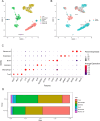
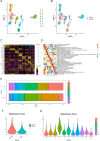

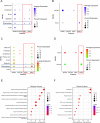
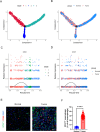
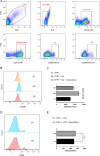
Similar articles
-
Single-cell RNA sequencing reveals immune microenvironment niche transitions during the invasive and metastatic processes of ground-glass nodules and part-solid nodules in lung adenocarcinoma.Mol Cancer. 2024 Nov 23;23(1):263. doi: 10.1186/s12943-024-02177-7. Mol Cancer. 2024. PMID: 39580469 Free PMC article.
-
Macrophage heterogeneity and oncogenic mechanisms in lung adenocarcinoma: insights from scRNA-seq analysis and predictive modeling.Front Immunol. 2025 Jan 9;15:1491872. doi: 10.3389/fimmu.2024.1491872. eCollection 2024. Front Immunol. 2025. PMID: 39850883 Free PMC article.
-
Immunomodulatory effects of traditional chinese medicine on cancer: insights from network pharmacology and single-cell RNA sequencing data on the treatment of lung adenocarcinoma with shenling baizhu powder.Funct Integr Genomics. 2025 Feb 28;25(1):47. doi: 10.1007/s10142-025-01550-z. Funct Integr Genomics. 2025. PMID: 40019596
-
Redefining Tumor-Associated Macrophage Subpopulations and Functions in the Tumor Microenvironment.Front Immunol. 2020 Aug 4;11:1731. doi: 10.3389/fimmu.2020.01731. eCollection 2020. Front Immunol. 2020. PMID: 32849616 Free PMC article. Review.
-
Tumor macrophage functional heterogeneity can inform the development of novel cancer therapies.Trends Immunol. 2023 Dec;44(12):971-985. doi: 10.1016/j.it.2023.10.007. Trends Immunol. 2023. PMID: 37995659 Review.
References
-
- Siegel R, Miller K, Wagle N, Jemal A. Cancer statistics, 2023. CA Cancer J Clin. 2023;73(1):17–48. 10.3322/caac.21763. - PubMed
-
- Wu F, Wang L, Zhou C. Lung cancer in China: current and prospect. Curr Opin Oncol. 2021;33(1):40–6. 10.1097/cco.0000000000000703. - PubMed
-
- Succony L, Rassl D, Barker A, McCaughan F, Rintoul R. Adenocarcinoma spectrum lesions of the lung: detection, pathology and treatment strategies. Cancer Treat Rev. 2021;99: 102237. 10.1016/j.ctrv.2021.102237. - PubMed
-
- Sung H, Ferlay J, Siegel R, et al. Global Cancer Statistics 2020: GLOBOCAN Estimates of Incidence and Mortality Worldwide for 36 Cancers in 185 Countries. CA Cancer J Clin. 2021;71(3):209–49. 10.3322/caac.21660. - PubMed
-
- Wei K, Ma Z, Yang F, et al. M2 macrophage-derived exosomes promote lung adenocarcinoma progression by delivering miR-942. Cancer Lett. 2022;526:205–16. 10.1016/j.canlet.2021.10.045. - PubMed
LinkOut - more resources
Full Text Sources
Research Materials
Miscellaneous
